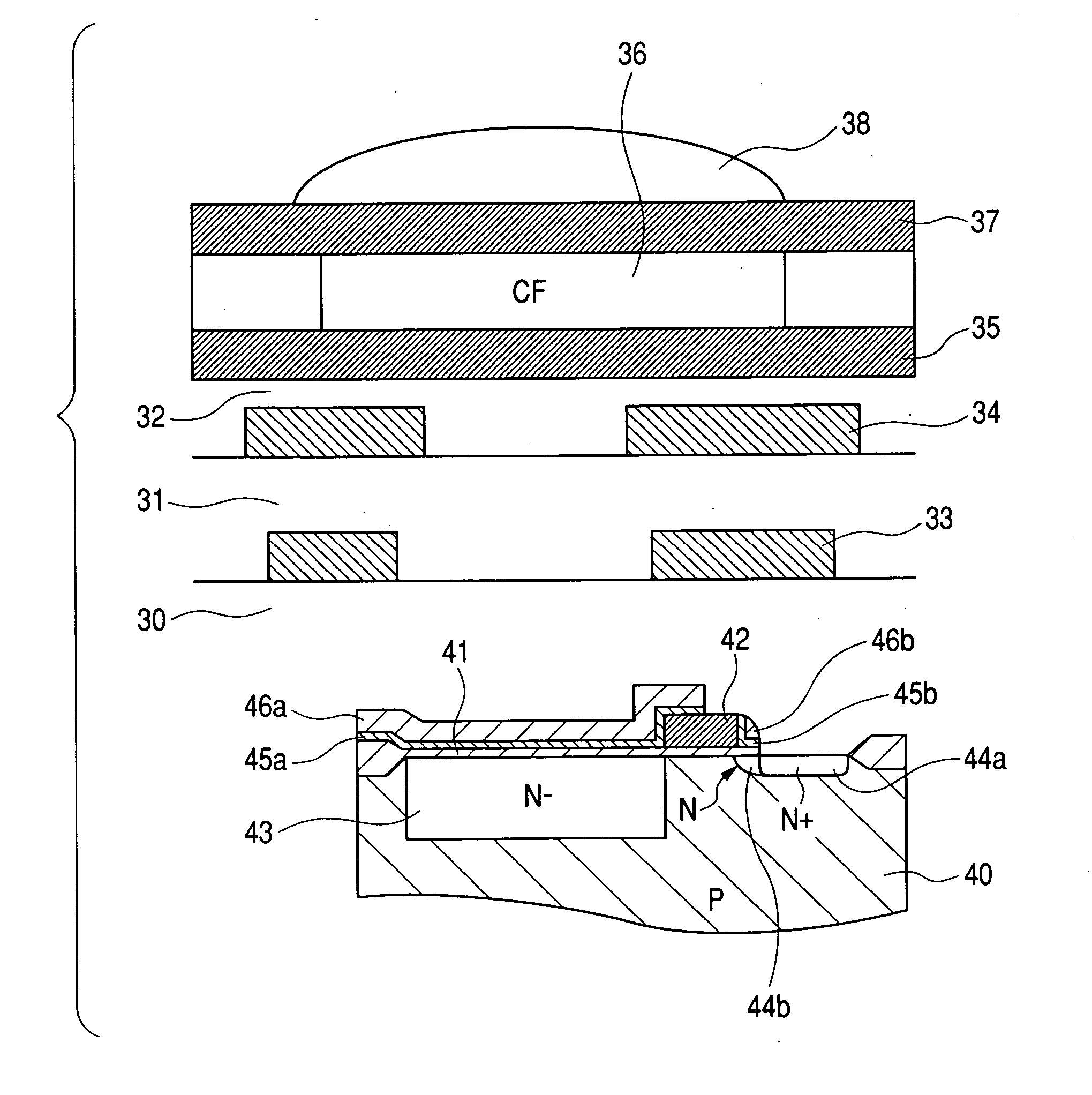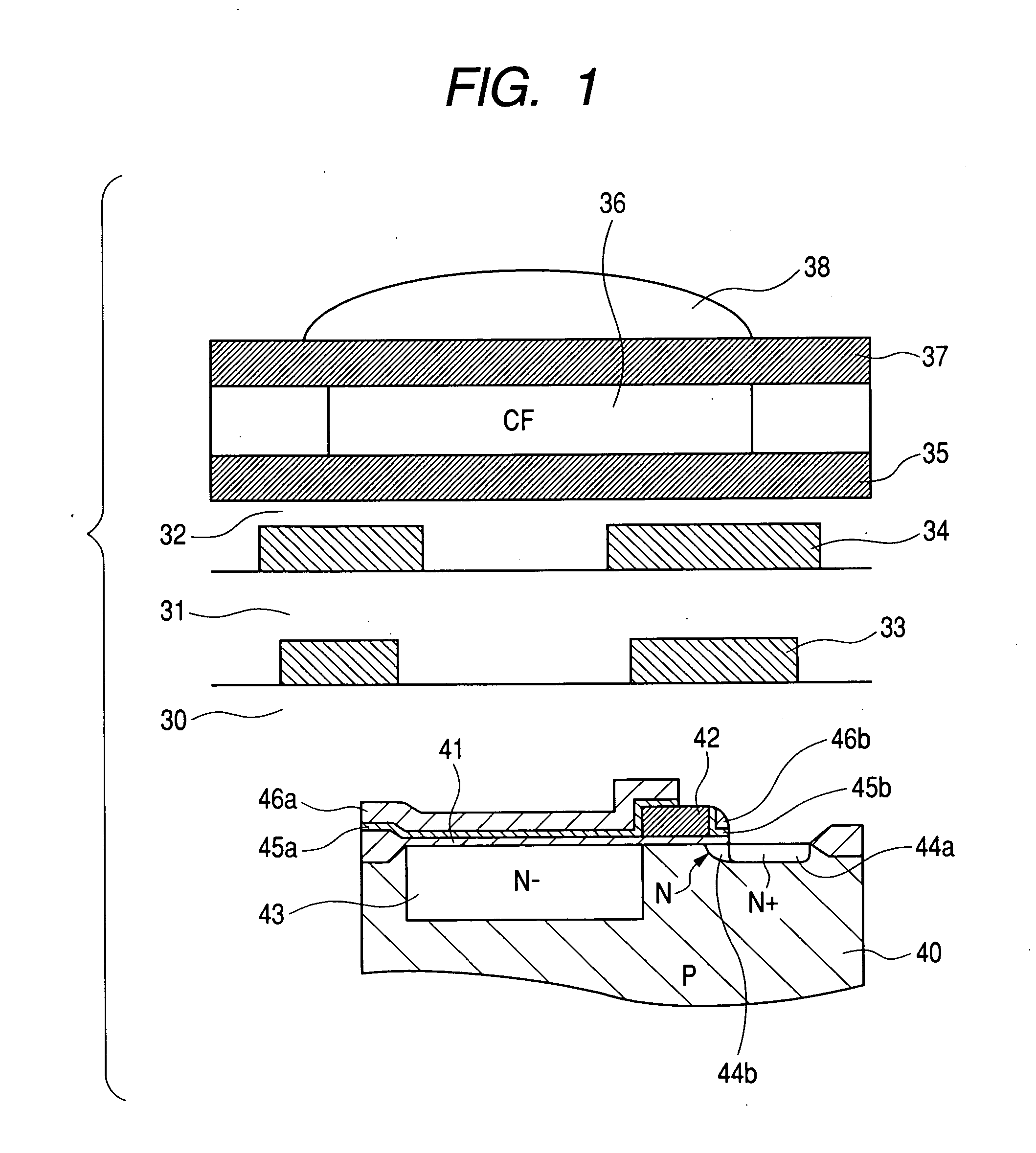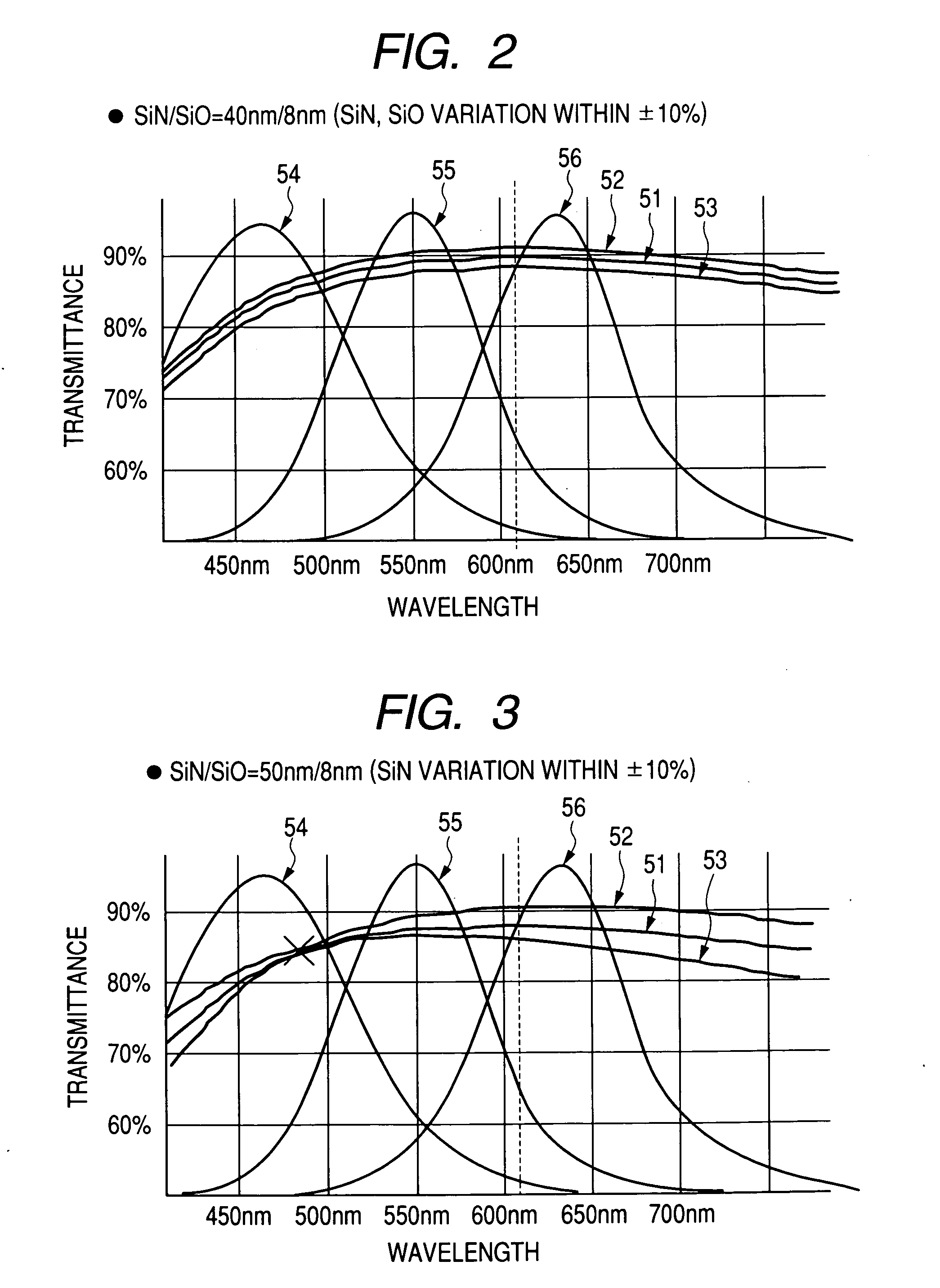Photoelectric conversion apparatus and image pickup system using photoelectric conversion apparatus
a technology of photoelectric conversion and photoelectric converter, which is applied in the direction of optical radiation measurement, radiation control devices, instruments, etc., can solve the problems of film thickness, film thickness, film production, etc., and achieve good color reproducibility
- Summary
- Abstract
- Description
- Claims
- Application Information
AI Technical Summary
Benefits of technology
Problems solved by technology
Method used
Image
Examples
example 1
[0036] In accordance with claim 1 of the present invention, after the insulation film of the photoelectric conversion apparatus of FIG. 1 was formed to be 8 nm thick as a silicon oxide film and the antireflective film was formed to be 30 nm thick as a silicon nitride film, wiring layers were formed. Thereby, a photoelectric conversion apparatus including formed color filter layers of red, green and blue was made. The present example was made to have a variation in the antireflective film. FIG. 5 shows a spectral characteristic of the present example. A reference numeral 101 denotes a spectral characteristic in the case where the antireflective film takes a designed value (30 nm). A reference numeral 102 denotes a spectral characteristic in the case where the antireflective film is thicker by 10% (33 nm) owing to a variation. A reference numeral 103 denotes a spectral characteristic in the case where the antireflective film is thinner by 10% (27 nm) owing to a variation. A reference ...
example 2
[0040] In accordance with claim 1 of the present invention, after the insulation film of the photoelectric conversion apparatus of FIG. 1 was formed to be 8 nm thick as a silicon oxide film and the antireflective film was formed to be 30 nm thick as a silicon nitride film, wiring layers were formed. Thereby, a photoelectric conversion apparatus including formed color filter layers of red, green and blue was made. The present example was made to have a variation in the antireflective film. FIG. 6 shows a spectral characteristic of the present example. A reference numeral 201 denotes a spectral characteristic in the case where the antireflective film takes a designed value (8 nm) . A reference numeral 202 denotes a spectral characteristic in the case where the antireflective film is thicker by 10% owing to a variation. A reference numeral 203 denotes a spectral characteristic in the case where the antireflective film is thinner by 10% owing to a variation. A reference numeral 204 deno...
example 3
[0044] In accordance with claim 1 of the present invention, the insulation film of the photoelectric conversion apparatus of FIG. 1 was formed to be 8 nm thick as a silicon oxide film (n=1.66), and the antireflective film was formed to be 50 nm thick as a silicon oxynitride film. After that, wiring layers were formed. Thereby, a photoelectric conversion apparatus including formed color filter layers of red, green and blue was made. The present example was made to have variations in the antireflective film and in the insulation film. FIG. 7 shows spectral characteristics of the present example. A reference numeral 301 denotes a spectral characteristic in the case where the antireflective film takes a designed value. A reference numeral 302 denotes a spectral characteristic in the case where the antireflective film and the insulation film are severally thicker by 10% owing to a variation. A reference numeral 303 denotes a spectral characteristic in the case where the antireflective fi...
PUM
 Login to View More
Login to View More Abstract
Description
Claims
Application Information
 Login to View More
Login to View More - R&D
- Intellectual Property
- Life Sciences
- Materials
- Tech Scout
- Unparalleled Data Quality
- Higher Quality Content
- 60% Fewer Hallucinations
Browse by: Latest US Patents, China's latest patents, Technical Efficacy Thesaurus, Application Domain, Technology Topic, Popular Technical Reports.
© 2025 PatSnap. All rights reserved.Legal|Privacy policy|Modern Slavery Act Transparency Statement|Sitemap|About US| Contact US: help@patsnap.com



